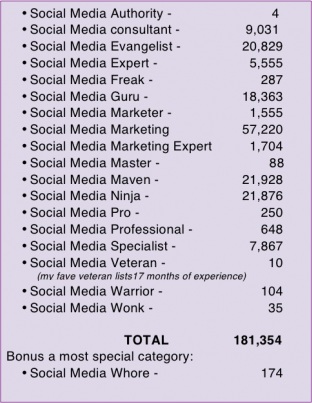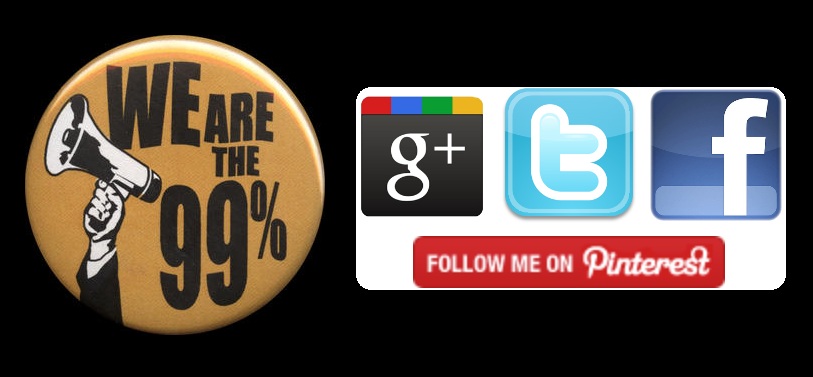
The automation of Twitter for businesses continues to become the norm.
As micro-blogging, interaction, and expression get replaced by RSS feeds, Facebook feeds, and post scheduling that is all dominated by links, links, and more links, the power of Twitter is being replaced by the easy alternatives to actually, well, using the service.
This is a huge mistake for most. There are some who are simply overwhelmed by social media and internet marketing in general and anything that they can check off their list with minimal or zero effort is a good thing. For those who actually want to find success on Twitter, it’s not going to work with zero effort. Thankfully, Twitter is a platform that can work very well with minimal effort. There has to be some, just not a ton.
Post fewer links
When I first started using Twitter over five years ago, the site was loaded with communication. Links were in fewer than 20% of the Tweets in my feeds. It was mostly about, “look at what I’m doing here” or “I really like pickles”. Now, links dominate Tweets. For news sources and other publications, this is fine. For super-active accounts that talk to people regularly, this is fine. For businesses who are not super-popular on social media, links should be used sparingly.
Again, it comes down to time. If you simply don’t have the time to come up with 3 or 4 good, solid unlinked Tweets, interactions with everyone who reaches out to you, and proactive interactions with new people the way a proper Twitter strategy should look, then getting something out there on a regular basis is better than going completely stagnant. The effectiveness of the “bail out” strategy is minimal, but if it’s all that you can afford from a time perspective, so be it.
It’s it’s at all possible to tone down the links and get truly engaging with your posts, you’ll get much more out of the service for your business.
Talk to people
It would have been hard to imagine in the days when I was first getting started on Twitter that there would be a need to give this advice, but that need is here. Twitter is first and foremost a communication tool. Most businesses are using it strictly for broadcasting. The paradox that many fail to understand is that if you talk about yourself less and talk about others more, your messages about yourself will reach a greater number of people. In many ways, it’s about earning the right to broadcast.
Those who use Twitter regularly can smell a feed-driven Twitter account in seconds. They can tell when an account is strictly being used to broadcast and when it’s truly being used for communication. When someone is strictly broadcasting, they better be a publication like Mashable or a celebrity like Oprah Winfrey or the message simply won’t be heard.
Here are some quick ways to establish that you’re communicating on Twitter rather than broadcasting:
- Send @replies – If you’re a standard business account that is getting a handful of interactions directed at you per day, reply to all of them. If you’re more popular, reply to the ones that are personalized. In other words, no need to reply to retweets unless the sender added their two cents to the conversation.
- Retweet often – A decent account should retweet 5+ times a day. A more active account can get away with fewer but should be retweeting at least once a day. This isn’t the “RT @0boy…” style, though those should be worked in as well. These are the direct retweets by pushing the retweet button directly from Twitter. This is important because it adds different avatars to your stream. When visitors see that you’re retweeting others, they’ll be more likely to assume that you’re actually listening to the outside world rather than working inside your own little Twitter broadcasting box.
- Start or join conversations – You’re an expert in your industry. You can chime in on conversations that are happening regarding your industry, your local area, or even the world in general. That doesn’t mean that you should butt in and start spreading your wisdom in one-on-one conversations, but it does mean responding to people’s Tweets or even starting the conversation with them directly. You can see in their Twitter streams whether they’re replying to people or not. Be sure that if you start a conversation, it’s with someone who will reply back to you.
- Split your times up – This is all very easy stuff, but doing it all in one block per day isn’t the best way to do it. It’s better than nothing, but the preferred method would be to do it at least twice a day. A best practice is to do it first thing in the morning when you’re done checking your morning emails and then again shortly after lunch. You don’t want to do it at the end of the day unless you’ll be checking your stream from home in the evening because you’ll want to be timely with your responses when people engage back at you.
Once you’ve established that you communicate properly through Twitter, you’ll have room to post occasional self-serving links. If all you post is links, your message will get lost in the mix.
Post pictures and unlinked text
Twitter has a great filter feature for mobile images. Use it. Before we recommended Instagram but that didn’t work out so well, so Tweeting images directly through the Twitter mobile app works great.
If you use Buffer or any of the other posting tools that upload images directly to Twitter (Hootsuite doesn’t do this, FYI), scheduling images through a PC is another way to get your feed flowing with engaging content. It’s not as good as mobile uploads as people love to see real pictures taken by real people associated with the business, but it’s definitely better than nothing.
Text posts are great as well. They can be sayings, quotes, opinions, or anything that has nothing other than possibly hashtags linking out from the Tweet. This is particularly useful when posting about local area events and asking questions. One note: if you do ask questions designed to get a response from your followers, be sure that you’re available to respond to their answers. Don’t drop a question in the queue and walk away. Again, timeliness is important, even for a business Twitter account.
* * *
Twitter is the one component of social media strategies that has been botched by most over the years. It’s hard to get real followers. It’s harder to get real engagement.
It can, however, prove to be extremely useful if you put the effort into it. Again, and I cannot stress this enough, the effort that’s required to take a Twitter account from decent to great really isn’t that much. It’s for this reason that if you have a little extra time every day, Twitter is a good investment of it.






















